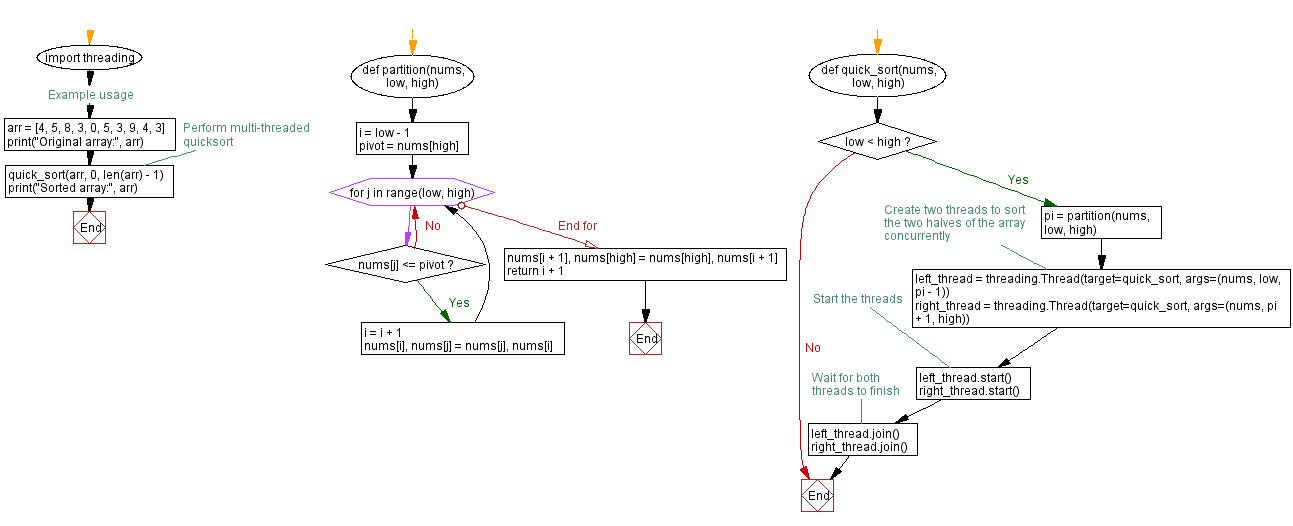Python Multi-threading and Concurrency: Multi-threaded quicksort implementation
6. Multi-threaded Quicksort
Write a Python program to implement a multi-threaded quicksort algorithm.
Sample Solution:
Python Code:
import threading
def partition(nums, low, high):
i = low - 1
pivot = nums[high]
for j in range(low, high):
if nums[j] <= pivot:
i = i + 1
nums[i], nums[j] = nums[j], nums[i]
nums[i + 1], nums[high] = nums[high], nums[i + 1]
return i + 1
def quick_sort(nums, low, high):
if low < high:
pi = partition(nums, low, high)
# Create two threads to sort the two halves of the array concurrently
left_thread = threading.Thread(target=quick_sort, args=(nums, low, pi - 1))
right_thread = threading.Thread(target=quick_sort, args=(nums, pi + 1, high))
# Start the threads
left_thread.start()
right_thread.start()
# Wait for both threads to finish
left_thread.join()
right_thread.join()
# Example usage
arr = [4, 5, 8, 3, 0, 5, 3, 9, 4, 3]
print("Original array:", arr)
# Perform multi-threaded quicksort
quick_sort(arr, 0, len(arr) - 1)
print("Sorted array:", arr)
Sample Output:
Original array: [4, 5, 8, 3, 0, 5, 3, 9, 4, 3] Sorted array: [0, 3, 3, 3, 4, 4, 5, 5, 8, 9]
Explanation:
In the above code, the "partition()" function is used to select a pivot and partition the array into two sub-arrays based on the pivot. The "quick_sort()" function recursively calls itself to sort the sub-arrays. Instead of sequentially executing the recursive calls, this implementation creates two threads to sort the left and right sub-arrays simultaneously.
The program starts two threads using threading.Thread, each targeting the "quicksort()" function with the appropriate sub-array bounds. After starting the threads, it waits for both threads to finish using the join method.
Flowchart:

For more Practice: Solve these Related Problems:
- Write a Python program to implement quicksort using multiple threads by concurrently sorting the partitions.
- Write a Python script to develop a multi-threaded quicksort algorithm and print the pivot elements chosen at each recursive level.
- Write a Python function that performs multi-threaded quicksort on a list of random integers and outputs the sorted list along with thread execution details.
- Write a Python program to compare the performance of a multi-threaded quicksort with a single-threaded version on a large dataset.
Go to:
Previous: Multi-threaded merge sort implementation.
Next: Concurrent HTTP requests with threads.
Python Code Editor :
Have another way to solve this solution? Contribute your code (and comments) through Disqus.
What is the difficulty level of this exercise?
Test your Programming skills with w3resource's quiz.
